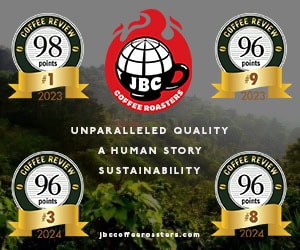It’s a well known fact that roasted coffee has a limited shelf life before it begins losing its flavors. But what about green (un-roasted) coffees? They too don’t last forever. 100 years ago it would have been said that most coffees need a year or 2 of age before they are good to use. However most coffee back then was a quite difficult animal. Wet processing was still in its infancy and fairly carelessly natural processed coffees would have been common most places in the world. These coffees would have been in many cases aggressively bitter and rotten tasting when fresh. However after a couple years their fouler qualities would have become less intense. This is still the case with commodity coffees today. If you were to experience them fresh they would be appalling. But most are roasted and ground long before they reach consumers and taste only mildly offensive and fairly flat and bland instead.
As coffee ages the first thing that tends to happen is flavors and aromas become less intense and acidity and sweetness usually then begin to follow. At some point the coffee begins to take up a past crop or ‘baggy’ taste, an astringent like quality that has a taste similar to wood, cardboard or burlap. Its not pleasant and begins to get more intense and dominate over a coffees other flavors more and more as the coffee continues to age.
How long does this take to happen? It depends. With coffee stored unprotected in the tropics exposed to high heat and humidity I’ve seen noticeable past crop tastes in as little as 3 months after harvesting. I’ve also on rare occasions come across coffees 18 months old that still tasted quite vibrant. 8-12 months though is where it usually begins to become noticeable. The moisture content and density of the coffee seem to have a lot to do with green coffees potential shelf life. Storage environment has a large impact as well. How old coffee is before it arrives to roasters in the USA varies a lot depending on where it is coming from. From Central and South America coffees are often 3-4 months old when they arrive. This is often the case for coffees from Indonesia and India as well. With some land-locked African countries though it can sometimes be 8-12 months before they arrive which unfortunately almost always means a loss in quality. In recent years some new technologies have began to be applied to coffee to help improve its shelf life and minimize damage to it before and during exporting. Vacuum packaging is available now in most Latin American countries. It is fairly expensive so is mostly being used for high-priced micro-lots and auction coffees. Special plastic liners common in the grain industry are also beginning to be used. My experience with both of these is that they definitely help. Freezing of vacuum packaged coffee has also begun occurring, pioneered by George Howell’s Terroir coffee company. This seems to extend green coffees potential shelf life even more
But just like with roasted coffee while we can do things to help limit the damage to coffees and extend the shelf life somewhat through storage and packaging it is always best if the product can be experienced as fresh as possible. With that in mind here are the likely the best times to experience fresh vibrant coffees from some growing regions of the world:
Central America –May-September
South America –October –February
India/Sumatra –February –June
Sulawesi/Java/Flores/Bali –October-February
Kenya/Ethiopia – May –September










